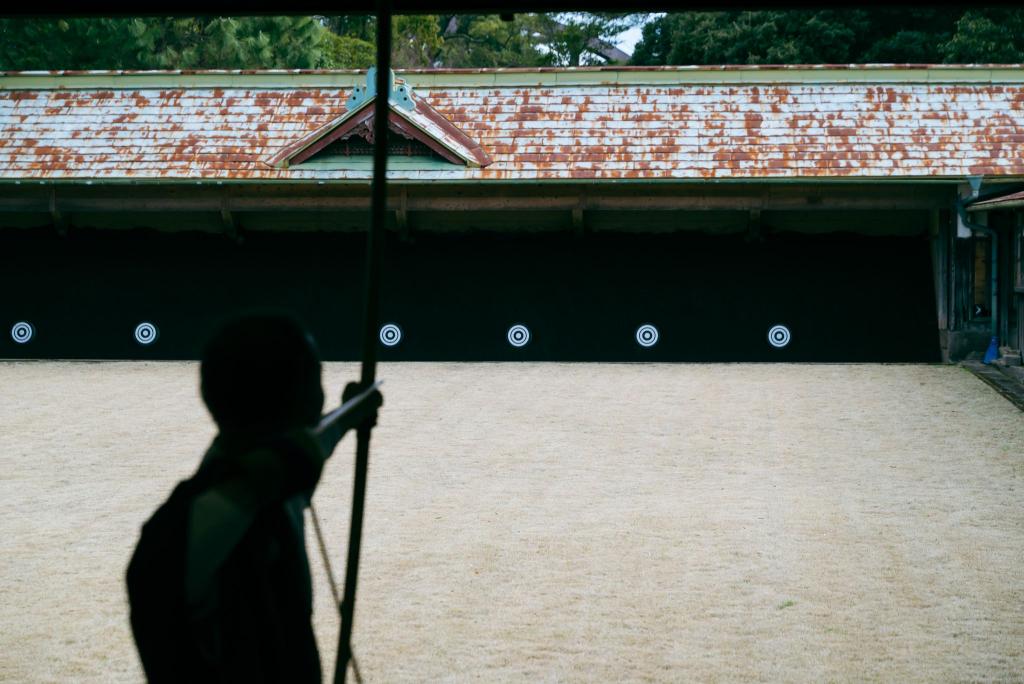The samurai is one of the most famous aspects of Japanese culture and still informs a lot of modern Japan. Kumamoto, as a castle town, had a strong samurai presence. Much of Kumamoto’s samurai tradition started during the rule of Kato Kiyomasa in the beginning of the 17th century. This was when agriculture in Kumamoto flourished and Kumamoto Castle was constructed, transforming the domain into a prosperous region.
Following the reign of Kato Kiyomasa, the domain was transferred to the Hosokawa clan. One event that greatly affected martial arts in Kumamoto was when Hosokawa Tadatoshi, the first Hosokawa lord of Kumamoto, invited one of Japan’s most legendary swordsmen—Miyamoto Musashi—to stay in Kumamoto.
Miyamoto Musashi
Born around 1584 in or near modern-day Hyogo Prefecture, Musashi made a name for himself as a swordsman from a young age. He won his first duel at the age of 13, going on to win a total of 61. Musashi went on to develop his own unique style of swordfighting called Niten Ichi-ryu (二天一流): a style of fighting using two swords.
In Musashi’s later years in Kumamoto, he turned his attention to arts like painting and calligraphy. While spending time in Reigando Cave, he penned the Book of Five Rings, a book summing up his ideas on martial arts and philosophy.

So noble and grateful to his lord was Musashi that he supposedly requested that, upon his death, he be buried in full armor in an upright position along the road into Kumamoto. Even in death, he wished to watch over and protect his lord.
Kenjutsu – Japanese Swordsmanship
Possibly through the influence of Musashi, there is still a strong kenjutsu culture in Kumamoto. Musashi’s Niten Ichi-ryu has been passed down through generations to the current 17h-generation disciple of Musashi named Kazunori Matsunaga and his son Akinori, providing a direct link between Musashi and modern Kumamoto kenjutsu.

In addition to practicing Niten Ichi-ryu, Matsunaga also practices iaido and runs a dojo in downtown Kumamoto City with his son. Matsunaga’s grandfather Tenko Matsunaga brought iaido to Kumamoto and helped spread it throughout Kyushu.

Matsunaga offers iaido lessons for residents and travelers alike.

Kyudo – Japanese Archery
Kyudo is another martial art with a strong following in Kumamoto. There are a number of kyudo dojos located within Kumamoto City, and they act like community centers where people of all ages can come and practice archery together.

The Kitaoka Natural Park Kyudo Dojo is a 15-min walk from Kumamoto Station. The dojo itself lies in the corner of Kitaoka Natural Park, a park with graves of some early members of the Hosokawa family.


Four schools of kyudo are represented in Kumamoto. When I visited the Kitaoka Park Dojo, there was a group of locals having a casual practice. Instead of strictly following the rules of a specific archery school, the focus was more on technique and enjoying each other’s company.
One of the archers was an adorable 93-year-old obaachan who, when she picked up her bow and took aim, transformed into a steely eyed markswoman. She was a national champion archer in her youth, and it is amazing to think that people she knew when she was young were alive at the end of Japan’s age of samurai.

Kitaoka Natural Park
2-5-1 Yokote, Chuo Ward (reservations required to use kyudo dojo)
Yabusame – Horseback Archery
Yabusame is arguably one of the most impressive martial arts to witness in person. A yabusame demonstration typically involves splendidly outfitted riders racing down a straight track with three targets.

The riders shoot at the targets while keeping their horse running straight. The result is a thrilling display full of excitement, tradition, and a not insignificant amount of danger.

Kumamoto is home to the Takeda school, one of the two major schools of yabusame. Practitioners of the Takeda school hold public performances throughout the year, including during the Izumi Shrine festivals at Suizenji Jojuen Garden. Check out this article here for more info on yabusame and where to see it in action!


